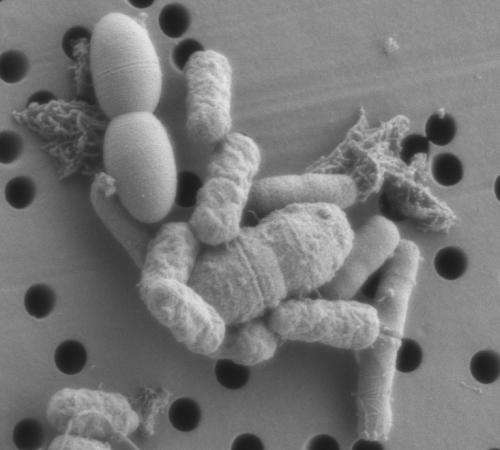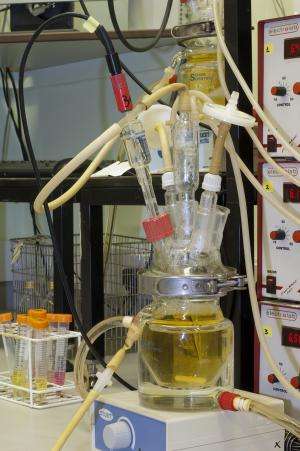Contact killing of Salmonella by human faecal bacteria

Our gut is home to trillions of bacteria, numbering more than the cells in the rest of our body, and these bacteria help us to digest our food, absorb nutrients and strengthen our immune system. This complex bacterial ecosystem, called the gut microbiota, also helps to prevent bad bacteria from colonising our bodies and making us ill.
As part of the symbiotic relationship between the gut microbiota and our bodies, the bacteria derive nutrition from our food and convert it into compounds that we can't make ourselves. Some of these compounds are part of the arsenal that combats harmful bacteria. To date, these extracellular products are the only identified defense mechanisms associated with gut.
Researchers at the Institute of Food Research, which is strategically funded by the Biotechnology and Biological Sciences Research Council, have recently found a novel mode of interaction between Salmonella, a foodborne pathogen, and the gut bacteria that leads to the inactivation of Salmonella.
This interaction requires very close proximity or cell contact. This new way of interaction between the "good" and the" bad" bacteria may contribute to prevent intestinal colonization and infection by foodborne pathogens.

The researchers collected faecal samples from several healthy human donors and used the experimental colon model facility of the Institute of Food Research to culture faecal bacteria together with Salmonella under conditions that mimicked those in the human colon. Gut bacteria effectively inactivated Salmonella in mixed cultures but only when cell contact between both populations was possible. Salmonella inactivation was not observed when a membrane was included into the system to prevent cell contact between populations.
To understand the way Salmonella is inactivated by contact with faecal bacteria, a mathematical model was developed. This 'predator-prey' type model will now be useful for finding ways of applying this new finding to ongoing efforts to reduce Salmonella infection.
More information: Loss of culturability of Salmonella Typhimurium upon cell-cell contact with human faecal bacteria, Gaspar Avendaño-Pérez and Carmen Pin, Applied and Environmental Microbiology doi: 10.1128/AEM.00092-13
Journal information: Applied and Environmental Microbiology
Provided by Norwich BioScience Institutes
















